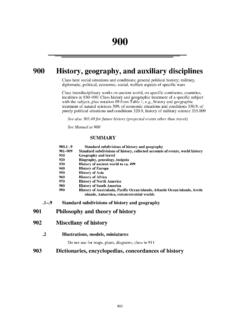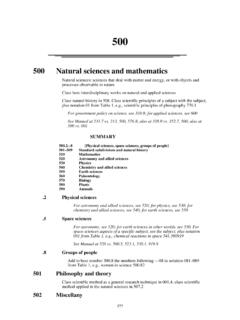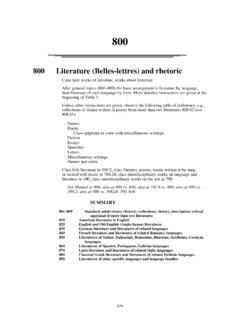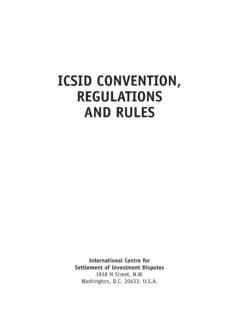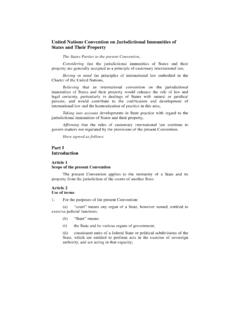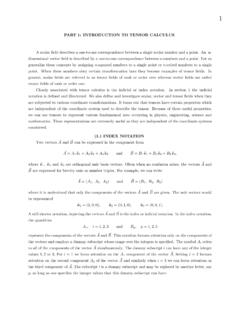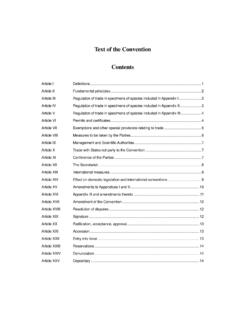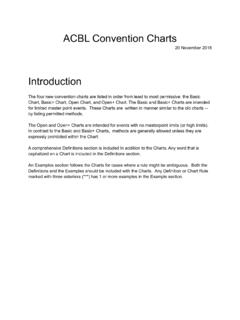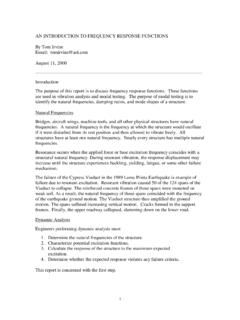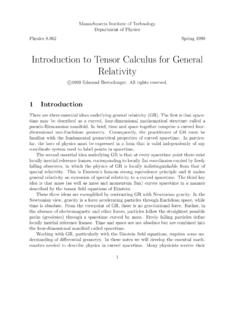Transcription of Introduction to the Dewey Decimal Classification
1 1 Introduction to the Dewey Decimal Classification About the Introduction This Introduction explains the basic principles and structure of the Dewey Decimal Classification (DDC) system. The Introduction is intended to be used in conjunction with the Glossary and the Manual. The Glossary defines terms used in the Introduction and elsewhere in the Classification . The Manual offers advice on classifying in difficult areas, and explains how to choose between related numbers. Classification : What It Is and What It Does Classification provides a system for organizing knowledge. Classification may be used to organize knowledge represented in any form, , books, documents, electronic resources.
2 Notation is the system of symbols used to represent the classes in a Classification system. In the Dewey Decimal Classification , the notation is expressed in Arabic numerals. The notation gives both the unique meaning of the class and its relation to other classes. The notation provides a universal language to identify the class and related classes, regardless of the fact that different words or languages may be used to describe the class. History, Current Use, and Development of the Dewey Decimal Classification The Dewey Decimal Classification conceived by Melvil Dewey in 1873 and first published in 1876 is a general knowledge organization tool that is continuously revised to keep pace with knowledge.
3 The system is further extended through number building, interoperable translations, association with categorized content, and mappings to other subject schemes. The DDC is published in full and abridged editions by OCLC Online Computer Library Center, Inc. The abridged edition is a logical truncation of the notational and structural hierarchy of the corresponding full edition on which it is based, and is intended for general collections of 20,000 titles or less. Both editions are issued in print and electronic versions; the electronic versions are updated frequently and contain additional index 2entries and mapped vocabulary.
4 OCLC owns all copyright rights in the Dewey Decimal Classification , and licenses the system for a variety of uses. The DDC is the most widely used Classification system in the world. Libraries in more than 138 countries use the DDC to organize and provide access to their collections, and DDC numbers are featured in the national bibliographies of more than sixty countries. Libraries of every type apply Dewey numbers on a daily basis and share these numbers through a variety of means (including WorldCat). Dewey is also used in a variety of applications on the web in support of categorization, browsing, and retrieval. The DDC has been translated into over thirty languages.
5 Since 1988, authorized translations of the full and abridged editions of the DDC have been published or are under way in Arabic, French, German, Greek, Hebrew, Icelandic, Indonesian, Italian, Norwegian, Russian, Spanish, Swedish, Turkish, and Vietnamese. The DDC Summaries, the top three levels of the Dewey Decimal Classification system, have been translated into Afrikaans, Arabic, Chinese, Czech, French, German, Hebrew, Italian, Norwegian, Portuguese, Russian, Spanish, Swedish, and Vietnamese. One of Dewey 's great strengths is that the system is developed and maintained in a national bibliographic agency, the Library of Congress. The Dewey editorial office is located in the Dewey Section of the Library of Congress, where Classification specialists annually assign over 60,000 DDC numbers to records for works cataloged by the Library.
6 Having the editorial office within the Dewey Section enables the editors to detect trends in the literature that must be incorporated into the Classification . The editors prepare proposed schedule revisions and expansions, and forward the proposals to the Decimal Classification Editorial Policy Committee (EPC) for review and recommended action. EPC is a ten-member international board whose main function is to advise the editors and OCLC on matters relating to changes, innovations, and the general development of the Classification . EPC represents the interests of DDC users; its members come from national, public, special, and academic libraries, and from library schools.
7 Overview of the Dewey Decimal Classification Conceptual Framework The DDC is built on sound principles that make it ideal as a general knowledge organization tool: meaningful notation in universally recognized Arabic numerals, well-defined categories, well-developed hierarchies, and a rich network of relationships 3among topics. In the DDC, basic classes are organized by disciplines or fields of study. At the broadest level, the DDC is divided into ten main classes, which together cover the entire world of knowledge. Each main class is further divided into ten divisions, and each division into ten sections (not all the numbers for the divisions and sections have been used).
8 The main structure of the DDC is presented in the DDC Summaries in the beginning of volume 2. The first summary contains the ten main classes. The second summary contains the hundred divisions. The third summary contains the thousand sections. The headings associated with the numbers in the summaries have been edited for browsing purposes, and do not necessarily match the complete headings found in the schedules. The ten main classes are: 000 Computer science, information & general works 100 Philosophy & psychology 200 Religion 300 Social sciences 400 Language 500 Science 600 Technology 700 Arts & recreation 800 Literature 900 History & geography Class 000 is the most general class, and is used for works not limited to any one specific discipline.
9 Encyclopedias, newspapers, general periodicals. This class is also used for certain specialized disciplines that deal with knowledge and information, , computer science, library and information science, journalism. Each of the other main classes (100 900) comprises a major discipline or group of related disciplines. Class 100 covers philosophy, parapsychology and occultism, and psychology. Class 200 is devoted to religion. Class 300 covers the social sciences. Class 300 includes sociology, anthropology, statistics, political science, economics, law, public administration, social problems and services, education, commerce, communications, transportation, and customs.
10 4 Class 400 comprises language, linguistics, and specific languages. Literature, which is arranged by language, is found in 800. Class 500 is devoted to the natural sciences and mathematics. Class 600 is technology. Class 700 covers the arts: art in general, fine and decorative arts, music, and the performing arts. Recreation, including sports and games, is also classed in 700. Class 800 covers literature, and includes rhetoric, prose, poetry, drama, etc. Folk literature is classed with customs in 300. Class 900 is devoted primarily to history and geography. A history of a specific subject is classed with the subject.







